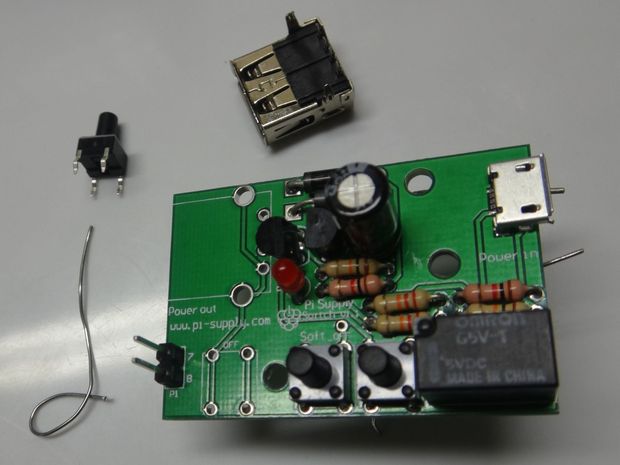
Building a Pi Supply Power Switch for Your Raspberry
by alanwbaker, instructables.com
The Raspberry Pi is a nifty little computer for education and hobby purposes. It's quite inexpensive so it doesn't include some features that other computers do. For example, it does not include an on-off switch--you must plug and unplug the power to turn it on or off. Fortunately a whole ecosystem of devices have grown up around the Raspberry Pi, including power switches.
The Pi Supply is an inexpensive circuit board with 3 power buttons (on, off, and soft shutdown). It is available only in kit form, which may be a bit daunting if you haven't assembled one before. Or maybe you're like me and the last time you used a soldering iron was in the last century. The manufacturer's assembly instructions are "minimal", so these instructions are designed to help a beginner assemble the kit. It will take about an hour if you are slow and careful or two hours if you are fast and careless. ;-)
Step 1. Get the Pi Supply
Go to the Pi Supply website and click on the Distributors tab. There it states who the distributor is for your country.
Step 2. Get the tools

- Soldering iron. Mine is a Weller 25-watt.
- Rosin core solder. Mine is .022" diameter.
- Small needle nose pliers for bending leads
- Diagonal cutters for clipping leads
- Pen for marking resistors
Step 3. Identify and label the parts

A resistor color code chart explains that the following resistor values have the following color codes.
- 22k: Red Red Orange
- 10k: Brown Black Orange
- 1k: Brown Black Red
Label the resistors. Their position on the circuit board is not obvious. The light-colored ends of the diodes match the light-colored ends of D1 and D2.
The cross-sections of the resistors match the shapes of Q1 and Q2. Flat sides face each other.
The negative (short) leg of C1 goes closest to the diodes. The positive (long) leg goes closest to the resistors
Step 4. Solder the parts to the board and clip off the extra bits
See this Instructable for a tutorial on how to solder.
Original Page: http://www.instructables.com/id/Building-a-Pi-Supply-Power-Switch-for-Your-Raspber/
Shared from Pocket